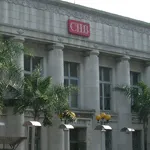
Chang Hwa cited for good funding, liquidity
Chang Hwa Bank's good market position, established franchise and importance to Taiwan banking system's stability is the basis of Standard & Poor’s latest ratings.
This is the basis of Standard & Poor's 'BBB+' long-term counterparty credit rating and 'A-2' short-term credit rating assigned on Chang Hwa Commercial Bank Ltd. The outlook on the long-term rating is stable. At the same time it also assigned the 'C+' bank fundamental strength rating on the bank.
At the end of June 2009, the bank held about 5 percent of the domestic financial market in terms of deposits, placing it as the ninth largest bank.
"The ratings reflect the bank's good market position and established franchise in the domestic market, good liquidity and funding capability, and adequate capitalisation, as well as a degree of government support given its systemic importance to Taiwan's financial system," said credit analyst Patty Wang. "Counterbalancing factors include the bank's concentrated business profile and moderate profitability by international standards."
In Standard and Poor’s view, the bank's capitalisation is adequate relative to its risk profile, and expects it to remain at this level over the next one to two years.
Chang Hwa Bank has a concentrated business profile, which partly contributes to its moderate profitability by international standards. The bank's profitability also reflects its less proactive business growth strategy and the bank's loan mix mainly in the highly competitive corporate banking business.
"The stable outlook reflects our expectation that Chang Hwa Bank should be able to maintain its business profile and scale similar to the current level despite Taiwan's highly competitive financial market. We also expect the bank's profitability may slowly recover in terms of its net interest margin, but is unlikely to return to the level before the recent global financial market disruption over the next one to two years," added Ms. Wang. "Nonetheless, the bank's core earnings should still be able to absorb most of the potential hike in credit costs supplemented by the bank's adequate capital buffer."


















 Advertise
Advertise








